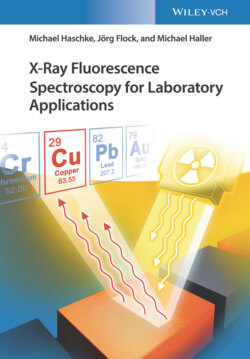Читать книгу X-Ray Fluorescence Spectroscopy for Laboratory Applications - Michael Haschke, Jörg Flock - Страница 49
3.7 Small Particles, Dust, and Aerosols
ОглавлениеDusts and aerosols are solid and liquid particles in the air, which occur in very different quantities depending on the location and the respective environmental conditions. Usually they are only present in very small amounts in the range of 50–500 ng/m3. In order to achieve enough signal intensity an enrichment of the air components must be made by accumulation. This can be achieved by depositing the material from an air stream on filters or impactors. The filters can be analyzed directly. This means the preparation of dusts and aerosols already starts with the collection of the sample material and depends on the available amount, i.e. the collected material as well as the filters used. The amount of the collected material is determined by the amount of air throughput, i.e. the airflow and collection time.
Plastic films made of Teflon or polycarbonate (Nucleopore or Millipore) are often used as filters. The dust particles are deposited on these films. The filters do not contribute to the fluorescence signal but can increase the scattering background of the spectra if they are too thick. It is also important to ensure that the coverage is not too high in order to reduce the matrix interaction in the sample material and to allow a simple quantification. One should also keep in mind that larger particles do not adhere well to the filters.
Occasionally, cellulose or glass fiber filters are used. The collected particles and aerosols penetrate into these filters. They have a higher absorption capacity, but the elements contained in the glassy filters can interfere with the measurement signal and influence the analytical result. Further, these filters are not suitable for quantification, since the penetration of the dust into the filter increases the effects of matrix interaction and cannot be sufficiently modeled. They can be used for qualitative analyses.
A further possibility for the deposition of aerosol particles is the use of impactors. In this case, the air stream is directed onto impact plates on which the particles stick. It is also possible to separate different particle sizes by the stepwise change in the airflow. The particles collected on the impact plates can be analyzed directly or transferred to other sample carriers.
The optimal collection techniques and filter materials depend very much on the respective analytical problem and must be selected by appropriate tests. Some examples for the collection and preparation of dusts at different loads and with various analytical objectives are discussed in Section 10.10.1.
Small single particles can be positioned on a sample holder and fixed with a material that does not contain any of the analyte elements – selected hair sprays have produced good result – the small particle can also be embedded in suitable backing material. The final preparation strongly depends on the sample material, its size, and the analytical task. A few applications are described in Chapter 15.
